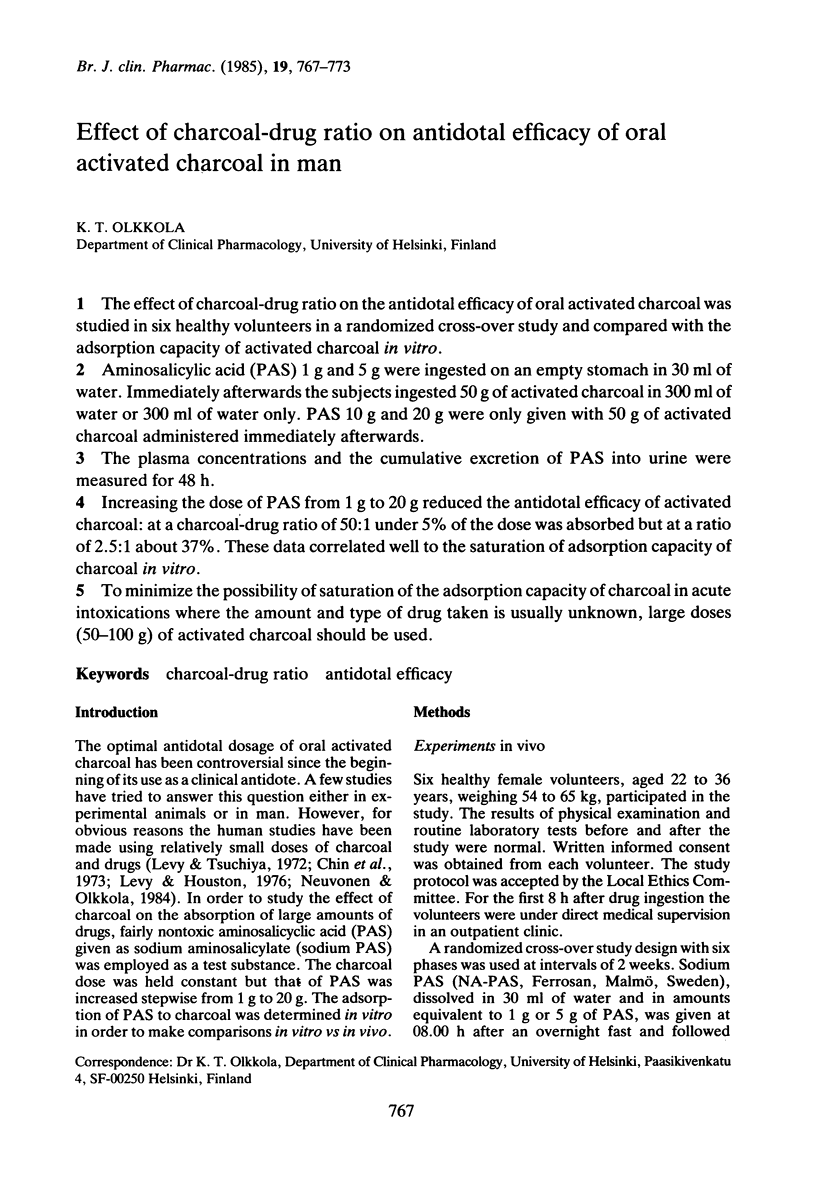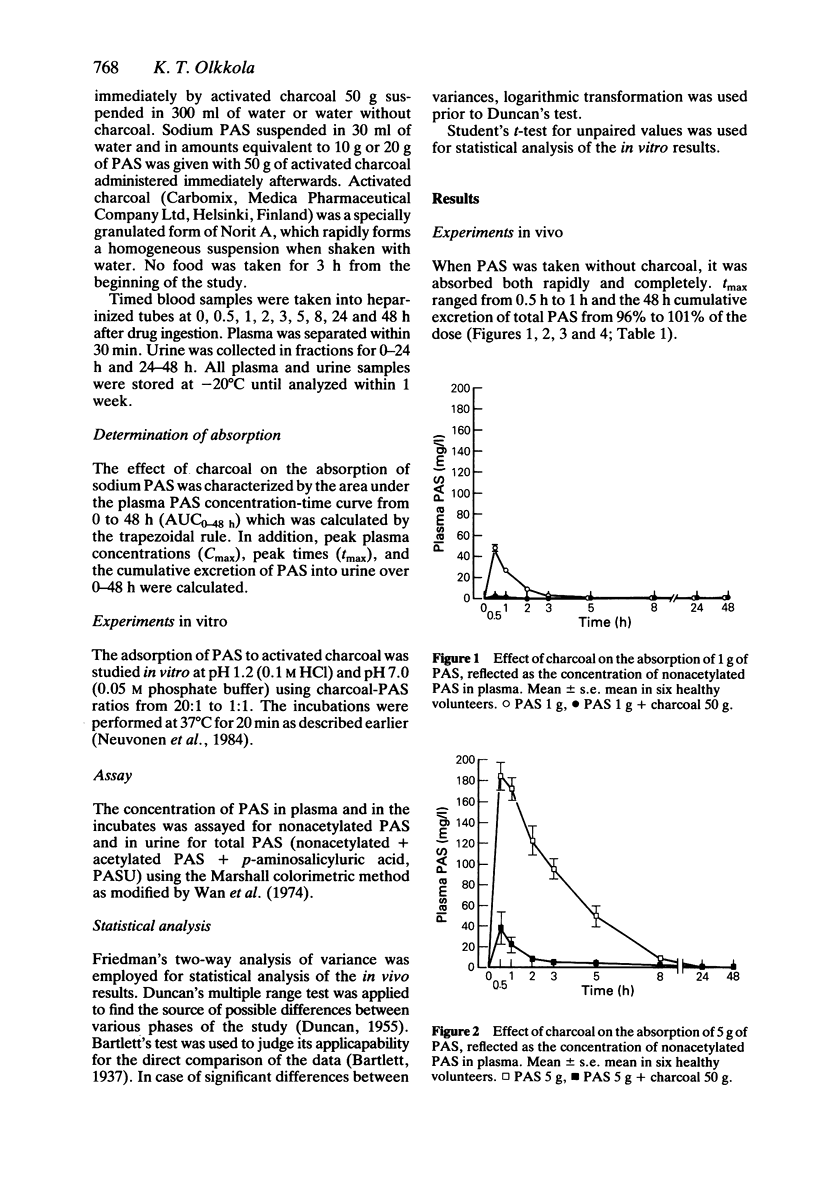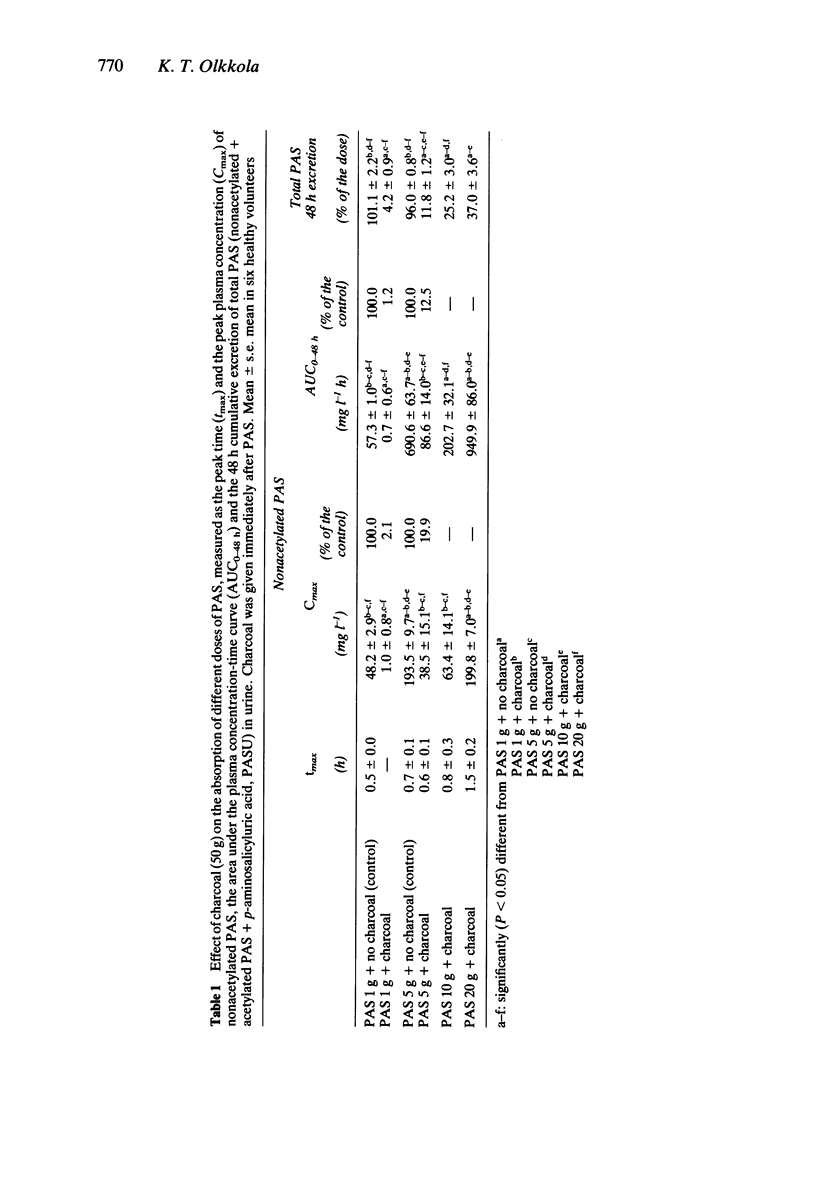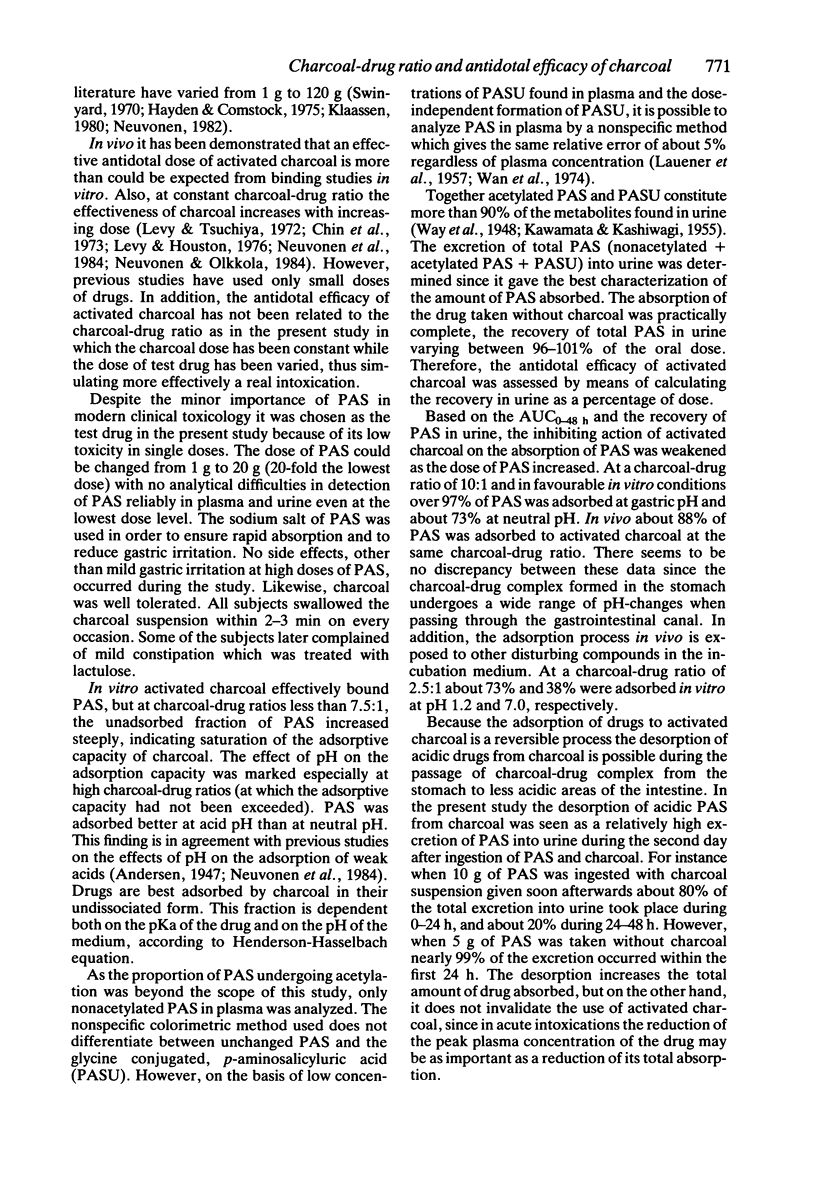Abstract
The effect of charcoal-drug ratio on the antidotal efficacy of oral activated charcoal was studied in six healthy volunteers in a randomized cross-over study and compared with the adsorption capacity of activated charcoal in vitro. Aminosalicylic acid (PAS) 1 g and 5 g were ingested on an empty stomach in 30 ml of water. Immediately afterwards the subjects ingested 50 g of activated charcoal in 300 ml of water or 300 ml of water only. PAS 10 g 20 g were only given with 50 g of activated charcoal administered immediately afterwards. The plasma concentrations and the cumulative excretion of PAS into urine were measured for 48 h. Increasing the dose of PAS from 1 g to 20 g reduced the antidotal efficacy of activated charcoal: at a charcoal-drug ratio of 50:1 under 5% of the dose was absorbed but at a ratio of 2.5:1 about 37%. These data correlated well to the saturation of adsorption capacity of charcoal in vitro. To minimize the possibility of saturation of the adsorption capacity of charcoal in acute intoxications where the amount and type of drug taken is usually unknown, large doses (50-100 g) of activated charcoal should be used.
Full text
PDF






Selected References
These references are in PubMed. This may not be the complete list of references from this article.
- Chin L., Picchioni A. L., Bourn W. M., Laird H. E. Optimal antidotal dose of activated charcoal. Toxicol Appl Pharmacol. 1973 Sep;26(1):103–108. doi: 10.1016/0041-008x(73)90090-2. [DOI] [PubMed] [Google Scholar]
- Hayden J. W., Comstock E. G. Use of activated charcoal in acute poisoning. Clin Toxicol. 1975;8(5):515–533. doi: 10.3109/15563657508988096. [DOI] [PubMed] [Google Scholar]
- LAUENER H., HODLER J., FAVEZ G., DETTWILER E., HADORN L. Bildung und Ausscheidung der Stoffwechselprodukte von RHO-Aminosalicylsäure. Klin Wochenschr. 1957 Apr 15;35(8):393–401. doi: 10.1007/BF01480793. [DOI] [PubMed] [Google Scholar]
- Levy G., Houston J. B. Effect of activated charcoal on acetaminophen absorption. Pediatrics. 1976 Sep;58(3):432–435. [PubMed] [Google Scholar]
- Levy G., Tsuchiya T. Effect of activated charcoal on aspirin absorption in man. Part I. Clin Pharmacol Ther. 1972 May-Jun;13(3):317–322. doi: 10.1002/cpt1972133317. [DOI] [PubMed] [Google Scholar]
- Neuvonen P. J. Clinical pharmacokinetics of oral activated charcoal in acute intoxications. Clin Pharmacokinet. 1982 Nov-Dec;7(6):465–489. doi: 10.2165/00003088-198207060-00001. [DOI] [PubMed] [Google Scholar]
- Neuvonen P. J., Olkkola K. T. Effect of dose of charcoal on the absorption of disopyramide, indomethacin and trimethoprim by man. Eur J Clin Pharmacol. 1984;26(6):761–767. doi: 10.1007/BF00541939. [DOI] [PubMed] [Google Scholar]


